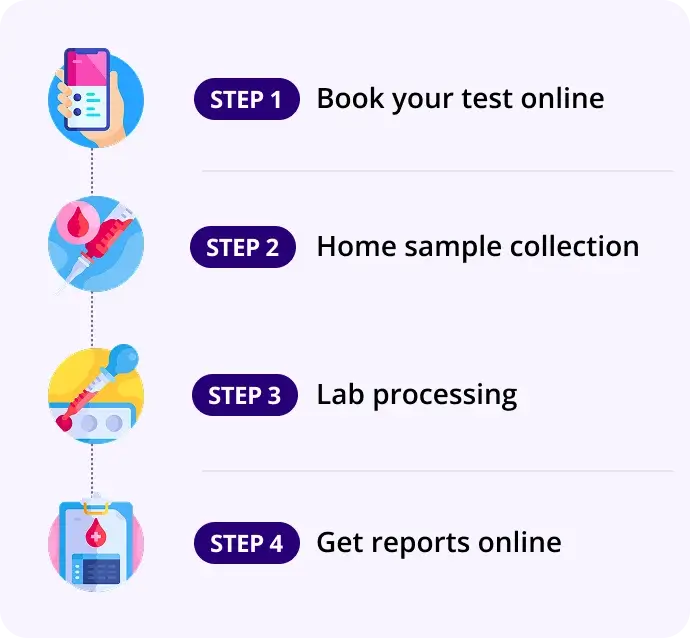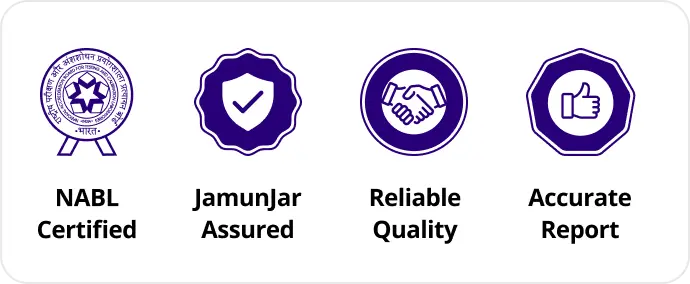Erythropoietin
Report in 60Hrs
At Home
No Fasting Required
Details
Erythropoietin (EPO) is a glycoprotein hormone primarily produced by the kidneys in response to low oxygen levels in the blood
₹2380₹2900
18% OFF
🧪 What is Erythropoietin (EPO)?
Erythropoietin (EPO) is a glycoprotein hormone primarily produced by the kidneys in response to low oxygen levels in the blood. It stimulates the bone marrow to increase the production of red blood cells (RBCs).
❓ Why is the Erythropoietin Test Done?
To:
- Determine the cause of anemia or polycythemia
- Evaluate bone marrow function
- Assess EPO-producing tumors (e.g., renal cell carcinoma, hepatocellular carcinoma)
- Monitor patients with chronic kidney disease (CKD)
- Guide EPO therapy in dialysis or chemotherapy patients
📊 Normal Range
Group | Normal EPO Level |
|---|---|
Adults | 4 to 24 mIU/mL (varies slightly by lab) |
Children | Slightly higher ranges may be seen |
At high altitudes | Naturally elevated |
🔍 Values must be interpreted in conjunction with hemoglobin/hematocrit levels.
🧬 How EPO Works
- Low blood oxygen → Kidney senses hypoxia → Increases EPO secretion
- EPO travels to bone marrow → Stimulates erythropoiesis (RBC production)
- More RBCs → Increased oxygen-carrying capacity → Negative feedback reduces EPO
📈 Interpretation of Results
EPO Level | Clinical Implications |
|---|---|
🔻 Low EPO | Seen in: |
🔺 High EPO | Seen in: |
❌ Inappropriately low EPO in anemia | Suggests impaired EPO production (often in CKD) |
❌ Inappropriately high EPO in high RBC count | Suggests paraneoplastic syndrome or secondary polycythemia |
🧠 Associated Organs and Conditions
Organ | Role |
|---|---|
Kidneys | Primary EPO producers |
Bone Marrow | Responds to EPO to make RBCs |
Lungs | Affect oxygenation, which regulates EPO |
Liver | Minor site of EPO production |
Tumors | Certain cancers (renal, hepatic) may produce EPO abnormally |
🔄 Related / Follow-Up Tests
- Hemoglobin / Hematocrit
- Complete Blood Count (CBC)
- Iron studies (Serum iron, TIBC, Ferritin)
- Vitamin B12 & Folate
- Arterial Blood Gases (ABG) – for hypoxia
- Renal Function Tests (BUN, Creatinine, eGFR)
- EPO-producing tumor workup (Imaging – CT/MRI abdomen)
- Bone Marrow Biopsy – in unexplained anemia
💉 Therapeutic EPO (Recombinant EPO)
Used in:
- Chronic kidney disease
- Chemotherapy-induced anemia
- HIV-related anemia
- Pre-surgical patients to reduce need for transfusion
Examples: Epoetin alfa, Darbepoetin alfa
⚠️ Requires monitoring to avoid excessive hemoglobin rise and thrombotic risk
📝 Summary
Parameter | Summary |
|---|---|
What | Hormone from kidneys that stimulates red blood cell production |
Why test | To evaluate anemia, polycythemia, kidney function, or tumor-related EPO secretion |
Normal Range | 4–24 mIU/mL |
High EPO | Due to hypoxia, anemia, or tumors |
Low EPO | Often due to CKD or marrow failure |
Key Organs | Kidneys (production), Bone marrow (response), Lungs (oxygenation) |
Follow-up | CBC, Iron panel, Kidney function, Imaging for tumors |
How our test process works!

